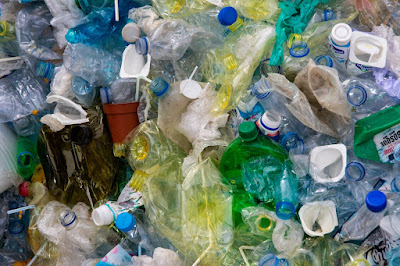The Dark Side of Fast Fashion: How Clothing Production Creates Massive Amounts of Waste
In recent years, the fashion industry has experienced a boom in fast fashion, a business model that prioritizes rapid production and low-cost garments.
While fast fashion offers affordability and quick access to the latest trends, it has a detrimental impact on our environment.
The dark side of fast fashion lies in the colossal amounts of waste it generates, contributing to pollution, resource depletion, and landfill overcrowding.
Let's delve into examples that highlight how clothing production contributes to this alarming waste problem.
Textile Waste
One of the most significant consequences of fast fashion is the staggering amount of textile waste it generates.
With rapid production cycles and consumers constantly chasing new trends, clothes are often discarded after minimal use. The materials used in these garments, such as synthetic fibers like polyester and nylon, do not decompose easily, exacerbating the environmental burden.
A prime example of textile waste is the phenomenon of "deadstock." Deadstock refers to unsold or unused inventory that sits in warehouses or storage facilities. According to the Environmental Protection Agency (EPA), an estimated 15% of fabric intended for clothing production ends up as deadstock, accumulating in landfills or incinerated, releasing harmful gases and toxins into the atmosphere.
Additionally, the practice of "overcutting" is prevalent in fast fashion production. Manufacturers often produce excess quantities of garments to meet demands, leading to surplus inventory and subsequent waste. The unsold clothing often ends up in discount stores or is discarded entirely, further exacerbating the textile waste problem.
Water Pollution and Chemical Usage
Fast fashion's manufacturing process relies heavily on chemical-intensive production methods.
From dyeing fabrics to finishing processes, numerous toxic chemicals are used, which pose serious health and environmental risks. The fashion industry is responsible for 20% of global wastewater pollution, primarily due to inadequate water treatment facilities and the discharge of toxic substances.
An example of this is the textile dyeing process. Synthetic dyes, containing heavy metals and toxic chemicals, are commonly used in clothing production. These dyes often find their way into rivers and water bodies, contaminating water sources and endangering aquatic ecosystems. The pollution not only harms wildlife but also poses significant risks to human health, as the contaminated water is often consumed by communities living downstream.
Landfill Overflow and Non-Biodegradable Materials
Fast fashion's disposable culture has led to an alarming increase in the volume of clothing waste ending up in landfills.
Synthetic fibers, widely used in fast fashion garments, take hundreds of years to decompose, exacerbating the landfill overflow problem. The Ellen MacArthur Foundation estimates that the fashion industry produces around 92 million tons of textile waste annually, the majority of which ends up in landfills or incinerated.
Furthermore, many clothing items are made with blends of natural and synthetic fibers, making them nearly impossible to recycle or decompose efficiently. Mixed-material garments create significant challenges for recycling facilities, leading to further waste accumulation. The lack of proper infrastructure and awareness around textile recycling means that the majority of discarded clothing ends up in landfills, perpetuating the cycle of waste and environmental degradation.
The dark side of fast fashion is a glaring reality we must confront. The industry's rapid production cycles, overconsumption, and inadequate waste management systems contribute to the colossal amounts of waste generated by clothing production. From textile waste and water pollution to landfill overflow, these examples underscore the urgent need for sustainable alternatives.
As consumers, we have the power to drive change. By embracing sustainable fashion practices, such as investing in high-quality, durable garments, supporting ethical and eco-friendly brands, and participating in clothing swaps or secondhand shopping, we can mitigate the negative impacts of fast fashion. It's time to redefine our relationship with clothing, prioritizing longevity, mindful consumption, and environmentally conscious choices.
(The image source is https://www.pexels.com/photo/pile-of-area-rugs-365067/ )




Comments
Post a Comment